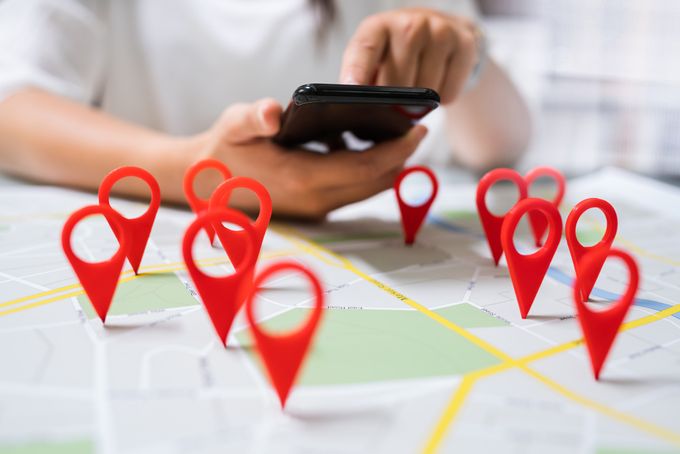How localizing your eCommerce website can increase profit
Published December 30, 2021

The internet has forever changed the way businesses market themselves and their products. Very few brands are now genuinely local, as potential markets span the globe. If you want your eCommerce business to compete successfully in this global world, the content of your online marketing and the way you reach customers through your website has to change. No matter where a potential customer lives, speak to them in their own language and resonate with them like a local brand, and you'll convert them from browsers to customers in no time.
What is localization?
Throughout history, most businesses had small local markets. In the 20th century, a few brands such as Coca-Cola and Kodak broke out of this small market to conquer the world. How did they do this? By tailoring their products and marketing to the customs, interests, behaviors, and regulations of the countries they operated in. This localization or tailoring to local markets builds relationships with target audiences, leading to increased sales. Take a look at every part of your eCommerce website to ensure it is properly localized. For inspiration, take a look at how Amazon has tackled it. Amazon may sell many of the same products around the world, but pages for different countries are presented in different ways. All content such as product descriptions, images, payment options, measurements, and even colors is localized for different markets.
Why is localization important?
English may be the global language of the internet, but studies show that non-native English speakers and non-English speakers want content in their own language:
- 75% want to purchase products described in their mother tongue
- 73% of online shoppers want product reviews written in their first language
- 65% of non-native English speakers choose to shop in their own language where possible
- 40% will only buy products described in their own language
- 92% want to use their own currency to make purchases
What is the key to using localization to increase your profits?
Localization needs to be a whole-company policy with a detailed, goal-oriented plan drawn up to address it. To get your process started, we've highlighted five key points.
1. It's important to connect with multiple markets
To transform a single-language, single-market eCommerce business into a global success, you need to localize all aspects of your eCommerce website. This means not only translating to other languages, but focusing on your website's visual elements such as product images, videos, and infographics. Ensure photographs, graphics, and videos reflect the diversity of your market. For example, are the local population and the local landscape represented? Is the weather correct? Are cars driving on the correct side of the road?
Consider carefully how you use color. Red for promotional pages is acceptable in China where it reflects attributes of joy and celebration. In Japan, however, red signifies danger or anger. Even using the 'thumbs-up' gesture can be tricky. To most people, it's a positive gesture, but in many middle eastern countries (as well as Greece) it's considered extremely rude. Even badly designed symbols can have disastrous consequences. When Apple launched their Macintosh computer, many Europeans mistook the trash icon for the mailbox icon with disastrous results for international communications! The bottom line is, do your research and you'll create a diverse and repeat customer base.
2. Local and seasonal events trigger spending sprees
Valentine's Day, Mother's Day, Thanksgiving, Black Friday, and Christmas Day are guaranteed to trigger spending sprees in North America and much of Europe. Product releases and advertising campaigns are planned around these key days. Localization takes this further, recognizing and capitalizing on special events unique to different cultures. You may be surprised to know that the combined revenue of Diwali (India), Singles' Day (China), and El Buen Fin (Mexico) is greater than that of Black Friday and Cyber Monday! Target these countries in the run-up to these events and your products will be snapped up by shoppers who feel their experiences are valid and valued.
Events such as the Olympics come around less often but are big revenue opportunities. Create products, blogs, and promotions tied to the event, but with content tailored to the host nation. You'll be surprised how much more often the content is read, shared, and acted upon.
3. A seamless shopping experience is important
A localized shopping experience goes further than product descriptions and web layouts. Make the whole shopping process as effortless as possible. Dates, dimensions, and any other practicalities in product descriptions and reviews should be in a format familiar to local customers. Menu options, navigation tools, and even button colors need to be as culturally appropriate and unambiguous as possible. And, if your checkout process is unclear or unfamiliar, browsing may not convert to purchases. To ensure a click-through to the final payment, offer customers a choice of familiar methods of payment in their own currency.
4. SEO needs to be global
Marketing content created in North America and Europe is aimed at achieving high Google search rankings. To be truly global, however, your eCommerce site must be optimized for international search engines. Carry out thorough research on the preferred phrasing and search priorities of the search engines used by your target market and create content accordingly. Correctly localize search terms, don't just translate them word for word. Even where countries share the same language, such as the United States and the United Kingdom, different words have different meanings. Just think about lift versus elevator, boot versus trunk, or pavement versus sidewalk. Successful localization eliminates shopper and search engine confusion, and ensures online shoppers will find your site more easily and buy your products.
5. Localized customer support leads to conversions
Offering a personalized website experience improves site traffic and drives conversion rates, as well as leading to repeat eCommerce customers. This personalization should encompass customer support. Consider the wording and responses of FAQ pages, localize product guides and manuals for specific markets, and if your website features an AI-driven chatbot, make sure it's adapted for multiple cultures and languages. In the States, it's acceptable for a chatbot to greet customers by their first name. In Japan, this is considered extremely disrespectful. A customer's last name followed by the respectful suffix '-san' should be used.
Even better than chatbots? Real people who can answer their questions will give shoppers that push towards purchasing on your site. While it is, of course, not feasible for many eCommerce companies to have a support team that speaks all languages, utilizing a multilingual helpdesk, like the Zendesk integration from BLEND, helps translate support tickets in real-time so you can help your customers in their native language.
BLEND can help you properly localize all aspects of your eCommerce website and increase profit. Its knowledgeable and experienced local linguists guide you through the development of a successful localization strategy.







